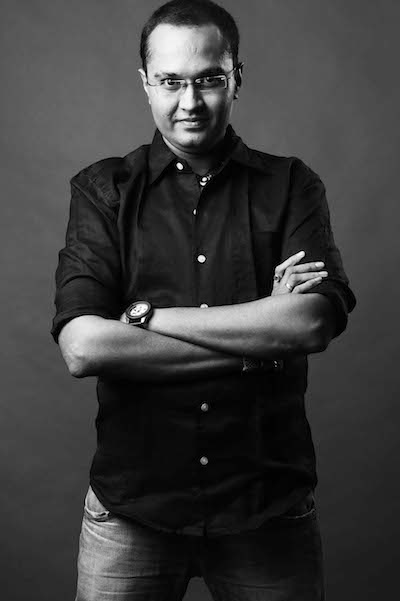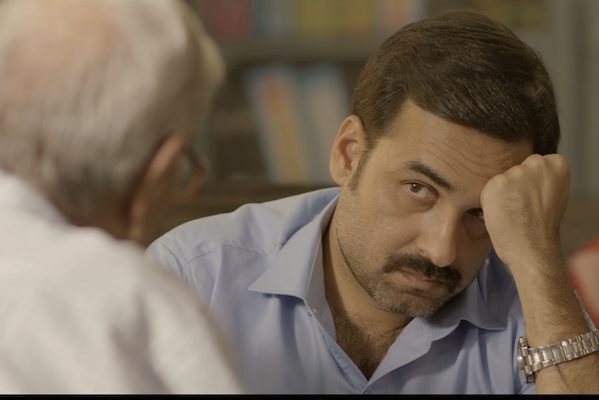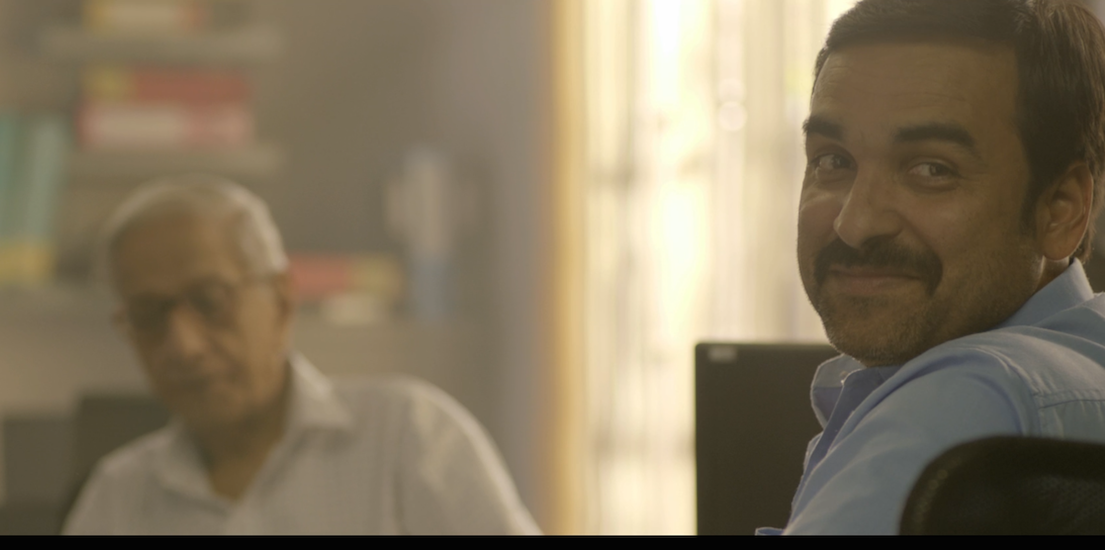TVCs are commercially active, while short ad films are creatively active
Pranav Harihar Sharma is a pioneer in the world for advertising. With over seventy advertising films to his credit, he has been a beacon of innovation and creativity. Among his numerous achievements, the latest and the most prominent include the Dada Saheb Phalke International Film Festival 2016’s Best Screenplay and Best Editing awards for Wazan (Ad Film category) and Watermelon (Short Film category) respectively.
Here are some excerpts from an interview with Pranav, where he talks about miraculously making Wazan with a shoestring budget, and how the digital medium is a boon for marketing.

Pranav Harihar Sharma
What was the brief given to you about Wazan?
The brief given to us was to create an ad film that resonates with the spirit of 26th January, the Republic Day of India. It had to be emotional, sentimental and heartwarming, with the power to reach millions of Indians and give them food for thought. It had to be patriotic and create a sense of belongingness towards our great nation. On a deeper level, this ad was very relevant because it came from our client, Videocon. Videocon is an Indian company which has now become a multinational giant and a major international player. An Indian company bringing out such a message is a matter of pride, as compared to an abroad-based company doing the same in India. For example, a similar patriotic ad would also make sense if it came from Flipkart; but it would sound shallow if it came from Amazon, because unlike Flipkart, Amazon is not Indian. It would have looked like a foreign company is trying to give Indians some gyan.
Pankaj Tripathi was the perfect choice for the clerk’s role, as he could bring out the slight mean streak and dominance that his character needed to portray
Tell us something about the making and casting of Wazan.
The script of the ad was written by my juniors, Bhuvan Sharma and Kapil Rana, while the shooting script was written by me. We were very clear from the beginning that this ad film will ride on performance. There wasn’t any scope to miscast even a single person in it. There was hardly any budget from the client, and the whole project had been almost deemed as unviable by the company. The script came as close as to being dumped altogether when Suman Varma, Head of Operations Rediffusion Delhi, and my partner, Jaideep Mahajan, National Creative Head for Rediffusion, suggested that I try to pursue the project. We started working on it. And I came up with the screenplay in about two hours!
We got all members of the crew, from the spot boy to the DOP on board. This was around 22nd January, and the project had to be completed by 25th, so that it could be released on the 26th! On Day 0, we also got started with the story-boarding and the art direction. Tulika Duggar came on board as the casting director. We decided to cast Pankaj Tripathi for the role of the clerk. He was the perfect choice for the role, as he could bring out the slight mean streak and dominance that his character needed to portray. For the role of the old man, we brought in the two lead actors from the Google Reunion ad. We prepped both of them, and gradually went ahead with Mr. Vishwa Mohan Badola. His body structure and screen presence were perfect for our character. We wanted somebody who looked vulnerable. And I am glad that we went ahead with him.
READ: THERE IS NO FUN IN PLAYING SIMILAR CHARACTERS – PANKAJ TRIPATHI
What was the feel and visual treatment that you chose to go with and why?
Our visual treatment was as real as possible. It is not a drama, thriller or a rom-com. Our target audience for this ad film was the common citizen, and we tried to be as true as we could be towards a common Indian scenario. It had to be the reflection of every person’s struggle in the country. We wanted people to watch it and exclaim- “This is my story!” The sound design is also very simple. It only moves when something unrealistic happens. It doesn’t move during the normal course of conversation, but it suddenly works as a cinematic cue, when the clerk finds the Indian Flag in the file.
There were no earth-shattering dialogues in the script. We also haven’t disturbed the natural flow of communication between the two protagonists. If somebody is, what I like to term it as, ‘cinematically intelligent’, he will notice that. There is a certain amount of close-up on the actor’s faces when they are delivering their dialogues. The DOP, Akhilesh Shrivastava, didn’t make the frame look like it was treated. In fact, we shot the entire ad film in as much natural light as possible. Satyajit Ray is also famous for shooting his films in natural light. Sometimes not doing something is a subtle way of doing a lot.
Our target audience for this ad film was the common citizen, and we tried to be as true as we could be towards a common Indian scenario
What is the fundamental difference between a short ad film like Wazan, and a typical ad that we see on the television?
Typical ads are more about the products. Their product windows are very important. Whereas in short ad films, there is vehement focus on the communication and the script. Everything in a short ad film is eventually building up towards the product. Typical TVCs (Television Commercials) are commercially active, while short ad films are creatively active.
READ: BEST INDIAN AD CAMPAIGNS OF THE DECADE

Still from Wazan
What is the key to telling an impactful story in such a short span of time?
A filmmaker should never compromise with the soul of the story. TVCs are about crunching the script into an even shorter span of time, but short films are about expanding the length, as long as it stays true to the subject. When Pankaj Tripathi came for the shooting, he was constantly at his toes and seemed to not be at peace. He thought that this was a typical ad with a maximum length of sixty seconds. I then went up to him and told him that the length of this ad film is longer than a usual advertisement. Once he heard that, he was pretty much relaxed.
It is very important to get your actors on the same page as your vision. Then again as I said earlier, I didn’t treat it as a typical ad. When Pankaj and Mr. Badola are talking, I asked them to hold their dialogues and retain the nuances of their characters. This helped me capture their after reactions, which are very natural, on the camera. There is a particular instance in the video where Pankaj asks Mr. Badola to put some petrol on the file, and gives a cunning smile after that. That cunning smile was an after reaction from Pankaj! There have been poignant pauses after their dialogues, which again implies a natural conversation. Before we actually started shooting, we had at least four to five rehearsals, so that the characters could grow on the actors. I let them take liberty with their parts. An ad film should have the perfect length time with respect to its script. Neither longer nor less. Just perfect.
An ad film should have the perfect length time with respect to its script. Neither longer nor less. Just perfect
What was the budget for your project?
I cannot disclose the actual figure, but it was very nominal. We had to pull in favors to acquire some of the cast and crew.
READ: GUIDE TO MAKE YOUR SHORT ON A SHOESTRING BUDGET
What are the challenges of making short ad films in general?
An ad film cannot be viably made for television because TVCs have to fit in the slot of thirty, forty-five or sixty seconds, which turns out to be too expensive. TVCs have a budget. Short films struggle with budget. Also, there is no proper mechanism for a short film to recover on its investment yet. Two years down the line, the digital space will become a major player. Television will be reduced to a mere announcing medium, while the main marketing will be done through digital mediums!



